DIY: Trellis Wall with Climbing Vines


Introduction
Vertical gardening is one of the most impactful ways to transform a blank wall, fence, or outdoor nook into a dynamic and living feature. With just a few basic materials and the right climbing plants, a trellis wall can add beauty, texture, and privacy to nearly any space. Whether you’re working with a small backyard, a narrow side yard, or a patio that needs a little green structure, this project delivers a big visual payoff without requiring major construction. It’s also a smart way to support pollinators, highlight seasonal blooms, and showcase some of the most striking vines in your landscape. In this DIY guide, we’ll walk you through everything you need to build a trellis wall and bring it to life with vines that climb, flower, and thrive all summer long.
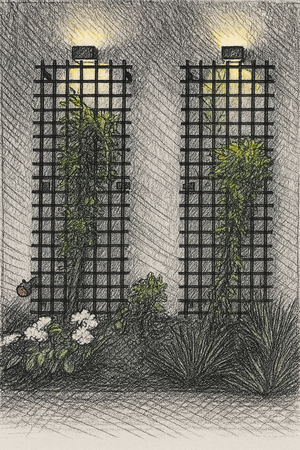
Materials Needed
- Trellis panels or wood slats (cedar or pressure-treated lumber recommended)
- Galvanized screws or exterior-grade fasteners
- Drill or screwdriver
- Wall anchors (for mounting to masonry or siding)
- Measuring tape and level
- Garden soil or potting mix (if using planters)
- Chosen climbing vines (see recommendations below)
- Mulch (optional)
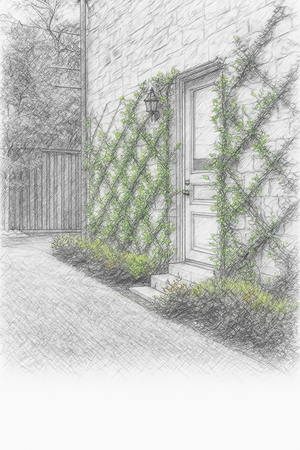
Step-by-Step Instructions
1. Choose your location: Find a sunny or partially shaded wall or fence that could use visual interest or a bit more privacy. Make sure the site has suitable exposure for your chosen vine.
2. Measure and plan: Use a measuring tape and level to determine where your trellis panels will go. Decide if you're installing directly into the ground, against a wall, or mounted above planter boxes.
3. Install your trellis: Attach wood or pre-made trellis panels securely. For wall installations, use wall anchors to avoid damaging siding or masonry. For freestanding trellises, secure them firmly into the ground with stakes or base brackets.
4. Prepare the planting area: Dig planting holes near the base of the trellis or fill large containers with high-quality potting mix. Add compost if planting directly in the ground to improve drainage and nutrition.
5. Plant your climbing vines: Set plants slightly away from the trellis base (about 4–6 inches), angling them toward the structure. Water thoroughly after planting.
6. Guide and secure early growth: As your vines grow, gently tie or weave new shoots into the trellis using soft garden ties or twine. This helps them establish a strong structure early on.
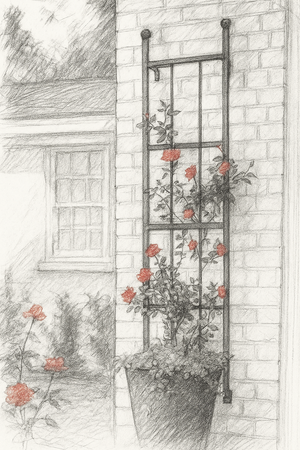
Best Vines for Trellis Walls
These climbing vines are widely available at most garden centers or through online plant retailers during the growing season:
- Clematis ‘Jackmanii’ – Deep purple blooms in mid-summer; thrives in full sun with cool roots
- Lonicera sempervirens (Coral Honeysuckle) – Native, non-invasive honeysuckle with red-orange blooms that attract hummingbirds
- Rosa ‘New Dawn’ – Classic soft pink climbing rose with a vigorous habit and fragrant blooms
- Hydrangea petiolaris (Climbing Hydrangea) – A shade-tolerant option with white lacecap blooms and exfoliating bark
- Wisteria frutescens (American Wisteria) – A controlled, native alternative to the aggressive Asian species
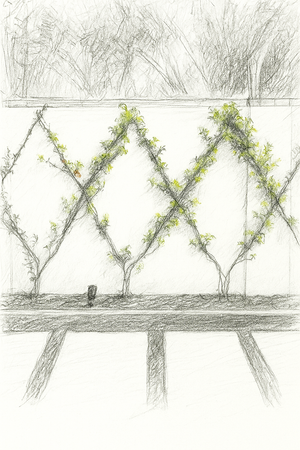
Tips for Success
To get the best results from your trellis wall, start by selecting a vine that matches your site’s conditions. Most flowering climbers prefer full sun for at least six hours a day, but some varieties—like climbing hydrangea—can handle part shade. Always check the light and soil needs of your chosen plants before installation.
Proper spacing is essential. When planting, place your vines about 4 to 6 inches away from the trellis base to avoid crowding the roots directly against the structure. Angle them slightly toward the trellis and water them deeply after planting to help establish strong roots.
Early training makes a big difference. Gently tie new growth to the trellis with soft garden ties or twine, spacing ties every 6 to 12 inches along the stem. This gives the vine a clear structure to follow and prevents sprawling or uneven growth. Over time, many climbers will begin to self-attach or twine on their own, but that early support is key for a polished look.
Consistent watering is especially important during the first growing season. Keep the soil evenly moist and consider adding mulch at the base of the plants to conserve water and suppress weeds. Once established, many vines become more drought-tolerant, but early care sets the foundation for long-term success.
Finally, don’t skip annual maintenance. Most climbing vines benefit from light pruning to remove dead or tangled growth and to encourage fresh blooms. Pruning schedules vary depending on the species—some bloom on old wood, others on new—so take time to understand your plant’s specific needs. With a little planning and attention, your trellis wall will evolve into a lush, flowering backdrop that improves with each passing year.
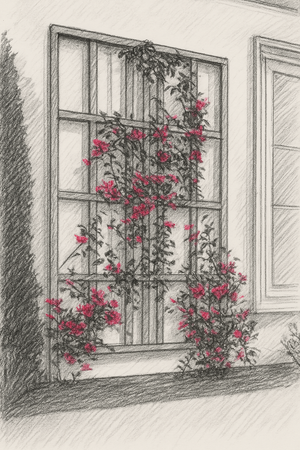
Why We Love It
A trellis wall transforms flat surfaces into dynamic, living features. Whether you’re softening a fence line, adding structure to a patio, or creating a natural screen, this project offers long-term visual impact with surprisingly little effort. Paired with the right vines, it becomes a pollinator-friendly focal point that evolves beautifully throughout the seasons.
